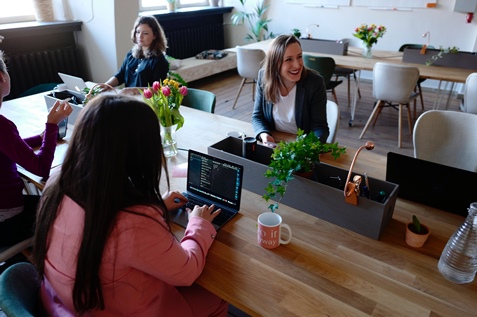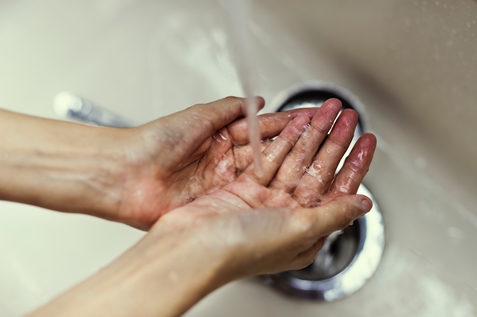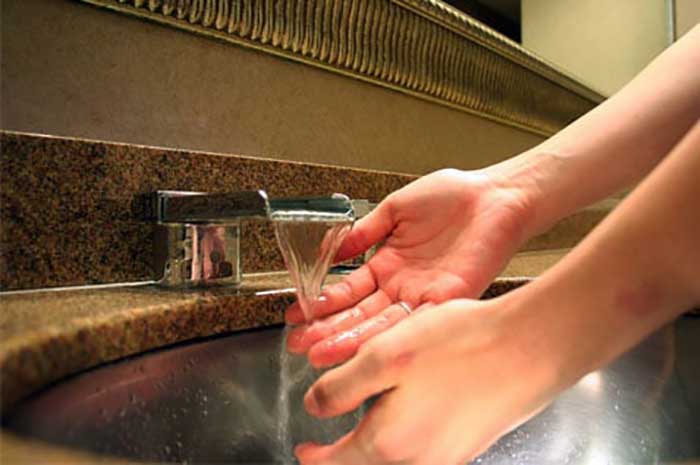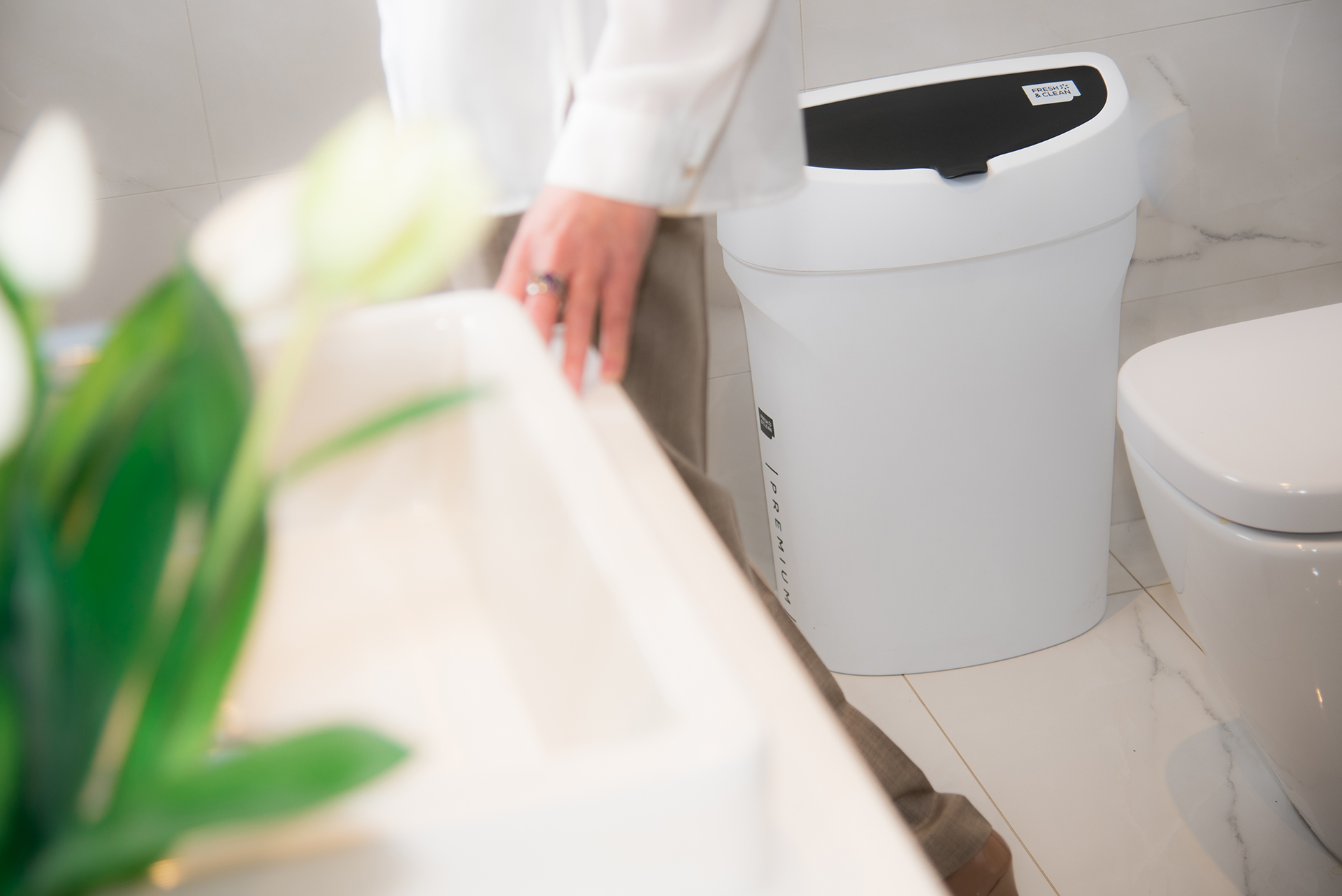
- /
- /
For a CEO of the turbulent 21st century, there’s rarely a time without you having too many irons in the fire.
Keeping up business trends within your industry is one of those irons. You might also have to swim against the current at one time or another. Your company’s future rests in your hands… As well as a few dozen, or hundred, or even thousand ‘hands’ of your employees. So keeping your staff healthy, happy and productive improves your chances significantly.
But how to do it in a workplace that is constantly reshaping? What you need is to have a turnaround strategy ready if you want things to work in your favour. Basically, this comes down to adapting to new workplace trends.
Want to know what is 2019 bringing us in terms of demographic and cultural shifts in the workplace? Keep reading.
The insights will help you keep pace with the demands of the modern workforce. And help you create an internal compass on how to tend to your most valuable asset as you move further into 2019.
Now, let’s get right down to the nitty gritty of how to get your powerhouse going.
Browse Through the Sections
✔ How to Get the Best From Your Team in 2019?
- Upskill For Increased Productivity and Reduced Turnover
- Place Collaboration Over Presentation
- Offer Healthcare Benefits
- Allow for a More Flexible Workweek
- Develop More Targeted HR Programs
- Be Tuned In to the Emerging Gen Z Workforce
- Give Place to Office Mobility
✔ How Do You Keep Employees Healthy in 2019?
- Introduce Mindfulness Programs
- Improve Workplace Hygiene
- Launch Office Hand Hygiene Improvement Initiatives
- Let the Natural Light In
How to Get the Best From Your Team in 2019?
Now, just about any employer wants to attract and keep a team of standouts around. But it’s next to impossible to do it if you’re clueless about what makes them tick. As well as what fuels them.
The answer to these questions will depend on the changes in workplace demographics. It’s estimated that by 2025 a whopping three quarters of the Australian labour pool will be made up of the Millennial generation.
Millennials, known as the first “digital natives” have a quite specific idea of what they want out of an organisation. Learning to lead them is getting to know them. What they’re typically known for are their:
- The bad reputation of being complacent, sluggish and poor mannered as a result of constant exposure to instant information
- Computer literacy and digital savviness
- The above-average academic qualifications
- The quality of being adaptive and enterprising
And then again, Generation Z is also slowly coming forth. And this is going to usher in additional workplace trend shifts.
To stay competitive, you need to ensure your company hits a high Q rating in the eyes of these young creative talents.
Our checklist will help make sure that what you have to offer them ticks just the right boxes.
1. Upskill for Improved Productivity and Reduced Turnover
Just stop for a second to think about it. What is the most likely to produce better performance in your employees? Broadly speaking, there are two types of factors that will spirit up almost any staffer out there.
- Extrinsic factors. This comes down to almost any imaginable corporate perk that translates into a material advantage for your employees. Think of a paycheck, modern office infrastructure, free snacks, etc.
- Intrinsic factors. They address inherent human needs for professional growth, recognition and accomplishment.
And while the extrinsic factors are necessary, it’s the intrinsic factors that will truly inspire your employees to perform. So offer them what they think are golden opportunities.
Let them get their feet wet in new marketable skills by participating in reskilling programs. Reskilling your workforce for the future has become an absolute corporate imperative.
“Research by Glassdoor reveals that among Millennials, the “ability to learn and progress” is now the principal driver of a company’s employment brand. Yet only one-third of Millennials believe their organisations are using their skills well, and 42 per cent say they are likely to leave because they are not learning fast enough. The takeaway is clear: employees want to learn; employers need to teach.”
Employee upskilling will also get you on the way of reaping other significant benefits for your company. It’ll help you:
- Gain a competitive edge over your competitors
- Create a satisfied and coherent team
- Get around budget-draining high turnover rates
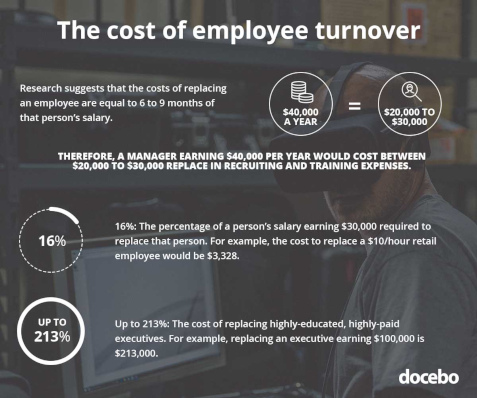
Image from docebo
2. Place Collaboration Over Presentation
If you mean to adapt to the emerging workplace modalities you need to overcome outmoded leadership models that are holding you and your team back.
As Millenials are increasingly infiltrating companies, so is collaboration at the expense of presentation. Leadership based on presentation is going the way of the dinosaurs.
This ties back to the fact that Millennials have a penchant for smaller, more intimate meetings. They prefer bouncing ideas off of each other and building on shared experience.
Having an actively engaged team that isn’t idling away on the sidelines brings about an array of positives. Companies on the forefront are choosing this approach over the more passive, top-down, hierarchical model because it:
- Helps in building stronger relationships with your stakeholders.
- Creates conditions for having a flow of ideas which you can test before implementation.
- Allows for a more error-proof decision making.
- Offers opportunity for more accurate task allocation.
3. Offer Healthcare Benefits
Now note this: More and more companies are offering healthcare coverage for their employees. These companies realise this increases their employee job satisfaction and gives them a competitive edge when it comes to acquiring new workforce.
As reported by an employer-review site Glassdoor, 57% of job seekers are looking for company-sponsored health care before applying for the job.
Now, there’s a growing concern among the big-name companies regarding the latest surge in healthcare costs. For what it’s worth, we’re going to be seeing a 6% increase in 2019 according to a study by PwC’s Health Research Institute.
To that end, companies are finding alternative ways to make medical services more accessible and affordable. We’re listing a few examples here to give you an idea.
- The folks over at Amazon, Berkshire Hathaway and J.P. Morgan Chase are experimenting in the non-profit sector. Their new venture includes a digital platform that offers affordable, simplified high quality health care.
- The United Services Automobile Association (USAA) have moved onward with initiating their own on-site medical center. Their employees can use it to do more or less any regular screening or check-up.
- And last but not least, Apple has established its own primary care clinics. The AC Wellness not only tends for their employees’ primary healthcare needs. The centre also works as a catalyst for promoting healthier life habits.
4. Allow for a More Flexible Workweek
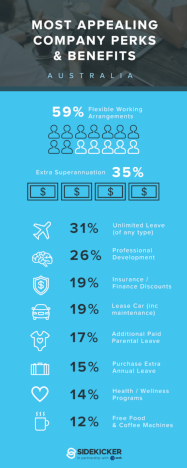
Image from docebo
Survey Sampling International (SSI) conducted a survey that polled 4800 Australians on their preference for employer perks and benefits.
Perhaps unsurprisingly, the survey findings uncover 59% of Aussies find flexible working hours as the most valuable benefit a company could offer.
Making slight shifts in working arrangements is something worth considering. Chances are productivity will grow by leaps and bounds when your staff are happy about their work hours.
But one thing’s for sure, globally, companies are increasingly taking up flexible hour programs. wth more to come in 2019 no doubt.
We’ve collected a few real-world examples to illustrate this growing trend.
- In 2018 a New Zealand company Perpetual Guardian offered a 4-day workweek trial to their employees without slashing their pay. The two-month trial period showed increased employee performance and improved work-life balance.
- PricewaterhouseCoopers started off the Flexible Talent Network Program for their staffers. The program differentiates between a variety of contracts on offer. This allows their workforce a whole lot of flexibility. Want to work shorter week? Think about engaging with them for as much as a few months a year? Consider it done.
- eBay is yet another refreshing example of the sort. They launched their eBay@Home program which offers their staffers the possibility to work remotely. 300 of their full-time customer service reps so far are working from the comfort of their home.
5. Develop More Targeted HR Programs
UNLEASH 2018, one of the most distinguished HR conferences out there, examined what the future holds in terms of HR workplace trends. Conference speakers brought some fresh ideas to the table you can incorporate into your workplace.
The conference offers a clear focus on employee experience upgrades and ways to boost employee engagement.
Stephen Heeke, Head of HR Data, Science, Insights, and Innovation, Deutsche Bahn proposes more targeted HR programs. To that end, companies need to acquire a deeper understanding of employee attributes and preferences.
His fellow headliner Amit Mohindra, CEO, People Analytics Success highlights the tools needed to bring the programs into fruition:
- “Employee sensing”. Picking up, interpreting and responding to employee high-frequency signals. This includes using data analytics to gather insights about your staffers’ behaviour, thoughts and feelings. You can use:
- Employee polling/surveys
- A quantitative method such as organizational network analysis (ONA)
- Workplace wearable tech
- Inclusion and well-being. Taking those signals to build a strong community and improve employee health and well-being.
6. Be Tuned In to the Emerging Gen Z Workforce
Stephen Heeke also shares that managing demographic change of the workforce calls for a proactive approach. It’s a master key for making your business sustainable and future-proof.
Now, Generation Z is going to comprise 36% of the global workforce by 2020. To welcome them into the workforce you need to catch on to their background. The emerging Gen Z is the first generation immersed completely in the internet-centric society.
So, it’ll take a few tweaks in your people strategies to make your company more appetising to the new workforce. We present a few ideas:
- Offer flexible scheduling, telecommuting and wellness-oriented benefits.
- Encourage employee input and unequivocal clarity in communication.
- Make use of advanced technological solutions in the workplace. Select application software suite made up of communication, time tracking and project management tools.
- Discuss performance statistics and development opportunities to engage your young employees.
- Direct your employer branding strategies towards your desired target demographics.
- Offer realistic job previews for better job matching when recruiting new applicants.
7. Give Place to Office Mobility
So you want an advanced modern office for your employees? Integrating digital and mobile devices is a trend quickly expanding in the business world. It’s shown to have a positive effect on employee performance, so you might as well catch the wave.
Bring your own device (BYOD) is a growing corporate phenomenon that changes the structure of the workplace. Over 80% of employees are already using their personal devices to access corporate networks.
This practice has opened up the possibility for an evolved, mobile workplace. Employees are now able to move around the office more freely without decreasing productivity.
They can collaborate and hold impromptu meetings in huddle rooms. And next relax with their co-workers in the collaborative setting of the breakout area.
How Do You Keep Employees Healthy in 2019?
Hoping to stay an attractive employer in 2019? It’s not just about the competitive salary. People are naturally drawn to workplaces that account for their core needs and bring out the best in them.
For starters, taking good care of employee wellbeing was shown to:
- lower absenteeism,
- increase retention,
- and boost productivity.
And it gets better. A recent research examined more than 800 organizations globally. They looked at company health implications on total returns to shareholders.
The research findings reveal that healthy companies have tripled the amount of their total returns to shareholders compared to their unhealthy counterparts.
So, learn from companies that successfully employ healthy practices. Then work out your own workplace health and wellbeing action plan. Here are a few ideas to get you started.
8. Introduce Mindfulness Programs
There are millions of Australians suffering from workplace-related stress and these numbers are expected to soar. 76% of Australian CFOs are confident that the stress levels of their staff will surge over the next few years.
One study identified one in two workers found it uncomfortable to discuss their mental health with their manager. At the same time, demands companies are pressing on their workforce are getting unrealistically high.
So, it’s not surprising company expectations are one of the three major causes of the stress-explosion in Australia. A 2017 study lists them in this order:
- increased workloads (61%),
- increased business expectations (52%)
- short deadlines (37%).
Companies are now concerned more than ever about their staff’s physiological and behavioural responses to stress. 94% of Aussie companies are already taking action to relieve stress in their workplace.
And many of them settle on mindfulness programs. Examples of companies investing in such programs include Nike, Google, Apple and General Mills. Some of them sharing mindfulness apps, such as Calm and Headspace with their staffers.
General Mills adopted a 7 week mindfulness and meditation program that yielded impressive results. 83% of participants reported the program helped them optimise their daily productivity while 80% of senior executives reported improved decision-making.
9. Improve Workplace Hygiene
Think your office is spick and span? Well, this is where you might be wrong. Offices are more germ-ridden places than people usually think. Disease-causing germs are lurking where you least expect them. Even if your office spaces look clean.
Poor office hygiene can seriously impinge on your employee health and cause a considerable productivity lag. And this costs you money.
Conversely, a clean and hygienic workplace will boost employee satisfaction and make them want to stay.
Below are a few simple office cleaning steps. Follow them and you can have peace of mind knowing you really did a good job hygiene-wise:
- Sanitise critical office areas. Use surface sanitisers to wipe the germs off your office high-touch surfaces. Computer keyboards and conference and break room surfaces are found to be the most germ-filled. So make sure to count those in.
- Automate your washrooms. Use no-touch technology installations to bring cross-contaminations chances as close as zero. The fewer surfaces your staff get to touch, the better. Especially in a wet, germ-ridden washroom environment. Invest in infrared sensor taps, automatic flush toilets and no-touch soap dispensers.
- Deep clean office toilets and urinals. Occasional deep cleans are going to spare you long-term grime and odour problems. And ensure your toilets can be safely used by your customers and staff. Opt for green non-toxic cleansing agents for your powerful deep clean to avoid toxic chemicals.
- Install WC sanitisers. Protect your staffers where they are the most vulnerable – in the toilet stalls. Germs that get splashed with every toilet flush are blown out into the air covering the stall area in small faecal particles. So, create double protection by installing toilet seat sanitisers and digital WC sanitisers. What you get is surface sanitisation. But also you get rid of bacteria at their source – the toilet pan.
- Keep the air fresh. Scent your rooms with natural air fresheners in intervals and keep your office spaces fresh smelling at all times.
10. Launch Office Hand Hygiene Improvement Initiatives
We’ll give you the benefit of the doubt when you say poor hand hygiene is nothing to be overly upset about. You’ve got that right.
However, the critical point here is the rising number of cases of methicillin-resistant Staphylococcus aureus (MRSA) infections in offices. MRSA is a bacteria that can cause serious difficult-to-treat bacterial infections.
And the problem is that we can be completely oblivious about how microbes spread throughout the office.
A 2014 study shows that viruses can spread around the office in a matter of hours. The researches swabbed office surfaces such as tabletops, phones and computer equipment.
What they found was it took the viruses 2 to 4 hours to spread pretty much everywhere.
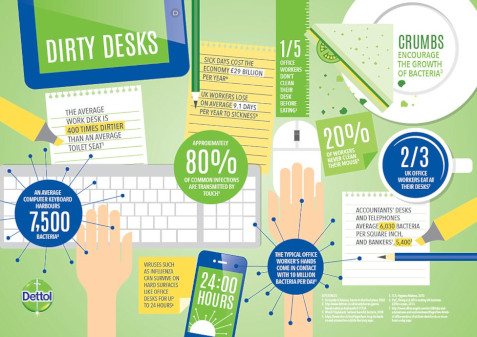
Image from dailymail.co.uk
So, what makes a difference between an underperforming team prone to taking frequent sick leave and a resilient team that toughs it out when you most needed it can be as simple as your team washing their hands.
Want to level up your office etiquette policy? What you need is a hand hygiene improvement initiative. Try these strategies:
- Make hand hygiene products readily available in your office. Get washrooms equipped with soap and paper towel dispensers, hand dryers or continuous cloth towels. Top it off with bringing hygiene to other office spaces too. Fit them out with soft on hands moisturiser fortified hand sanitisers.
- Organise staff training that heavily relies on visuals and slideshows.
- Load your workplace with hand washing reminders.
11. Let the Natural Light In
The use of daylight has a huge part in achieving positive organisational health. And it’s a highly sought-after office perk that outweighs latest office fads such as fitness centres, treadmill desks – even on-site childcare services.
Yet, Australian office spaces are notoriously poorly day-lit. Research has found that 51% of the Aussie workspaces are lacking in natural light, while 28% have no windows, whatsoever.
A Heschong Mahone Group study used computerised cognitive assessment tools to examine cognitive performance of 200 office workers working at their desktop computers.
The study has found daylight exposure and views of the outdoors to have a measurable relationship to enhanced worker performance. So offices investing in glass windows, light wall colours and strategic office furnishing are actually in the black.
Another in-depth study concluded that workers sitting at workstations positioned close to a window reported a 2% increase in productivity. Transposed to a revenue boost, this means an additional $100,000 a year of value for every 100 workers. And similarly, around $2 million gain over the entire window lifespan.
Furthermore, workers in luminous office environments reported an 84% decline in symptoms of headaches, eye strain and blurred vision symptoms.
Commercial interiors with optimised natural light bring in the following health and productivity benefits. They:
- Increase overall well-being
- Improve employee performance and alertness
- Enhance short term memory and attention span
- Boost work satisfaction
- Reduce eye strain symptoms and drowsiness
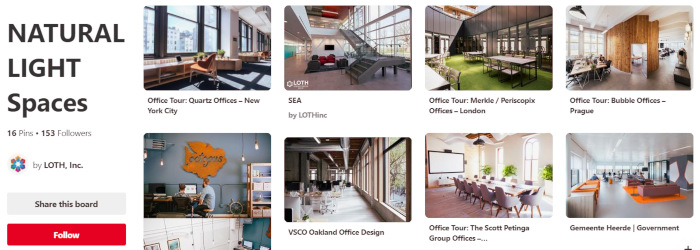
Image from LOTH, Inc
Steer Your Company to a Profitable Future
Employee wellbeing and productivity is a huge part of the trajectory of your company success. Now you’ve got your productivity checklist set for 2019, you’re good to go.
Find an ally that will side with you in creating a healthy and productive workplace and you’ll see improvement at a supercharged pace.
Fresh & Clean is a reliable partner you want by your side. We spare no effort to help Australian workplaces keep the bar high when it comes to workplace hygiene. Over 48,000 Australian businesses can back our story up.
Fresh & Clean is a hygiene service with a strong eco-friendly focus bringing washroom supplies over to you. Let us tailor an individual managed rental hygiene program for your business.
You should be focusing on more important matters. Not worrying about refilling and replacing your soap dispensers, hand sanitisers and sanitary disposal bins. It’s on Fresh & Clean now.
From as little as $1 a day, you’re getting covered with a full system of hygiene services, units and maintenance. With no extra costs. Call us now to get the deal that suits you most.
Photo courtesy of Pexel by rawpixel.com

